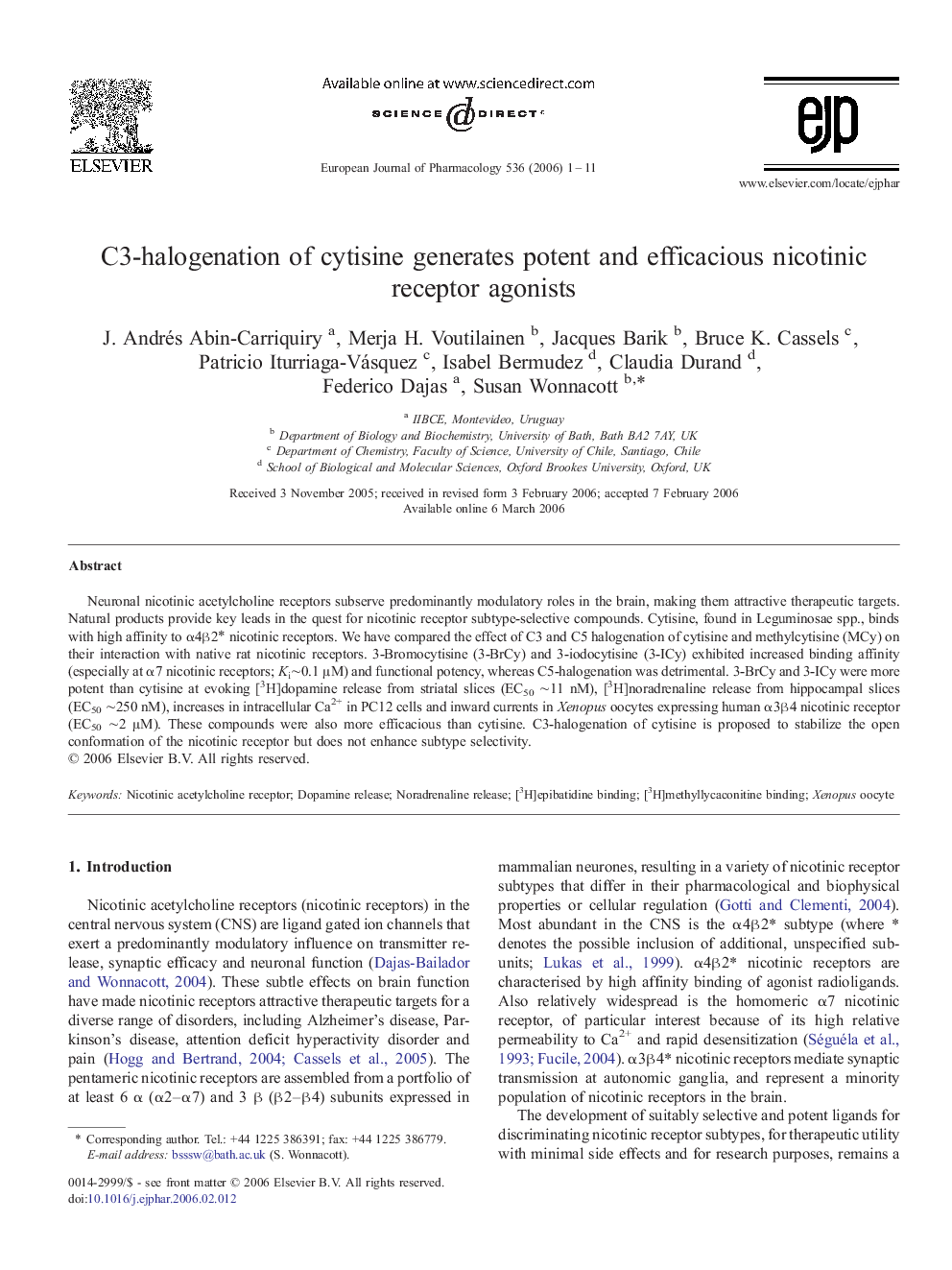| کد مقاله | کد نشریه | سال انتشار | مقاله انگلیسی | نسخه تمام متن |
|---|---|---|---|---|
| 2537155 | 1559183 | 2006 | 11 صفحه PDF | دانلود رایگان |

Neuronal nicotinic acetylcholine receptors subserve predominantly modulatory roles in the brain, making them attractive therapeutic targets. Natural products provide key leads in the quest for nicotinic receptor subtype-selective compounds. Cytisine, found in Leguminosae spp., binds with high affinity to α4β2⁎ nicotinic receptors. We have compared the effect of C3 and C5 halogenation of cytisine and methylcytisine (MCy) on their interaction with native rat nicotinic receptors. 3-Bromocytisine (3-BrCy) and 3-iodocytisine (3-ICy) exhibited increased binding affinity (especially at α7 nicotinic receptors; Ki∼0.1 μM) and functional potency, whereas C5-halogenation was detrimental. 3-BrCy and 3-ICy were more potent than cytisine at evoking [3H]dopamine release from striatal slices (EC50 ∼11 nM), [3H]noradrenaline release from hippocampal slices (EC50 ∼250 nM), increases in intracellular Ca2+ in PC12 cells and inward currents in Xenopus oocytes expressing human α3β4 nicotinic receptor (EC50 ∼2 μM). These compounds were also more efficacious than cytisine. C3-halogenation of cytisine is proposed to stabilize the open conformation of the nicotinic receptor but does not enhance subtype selectivity.
Journal: European Journal of Pharmacology - Volume 536, Issues 1–2, 24 April 2006, Pages 1–11